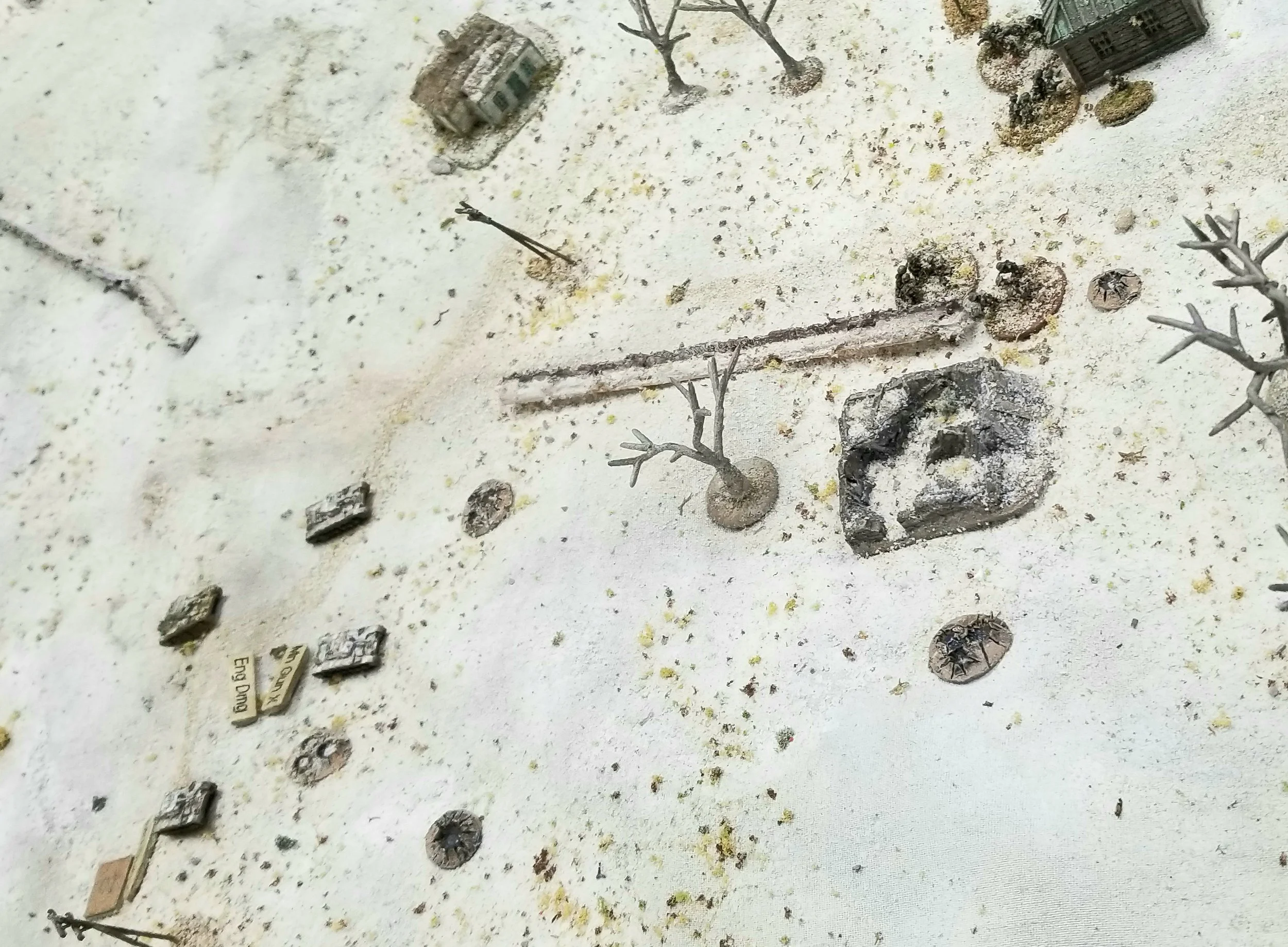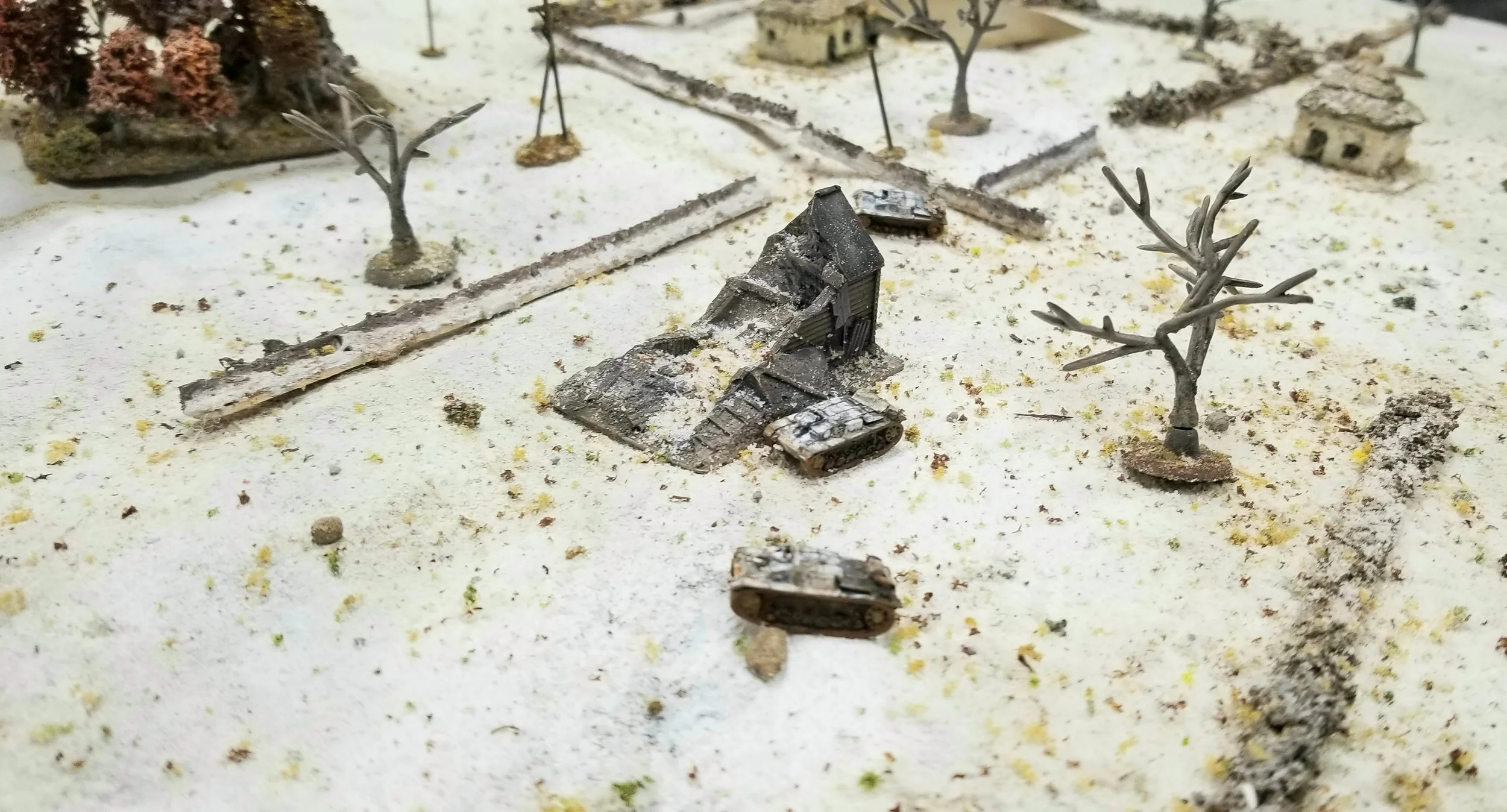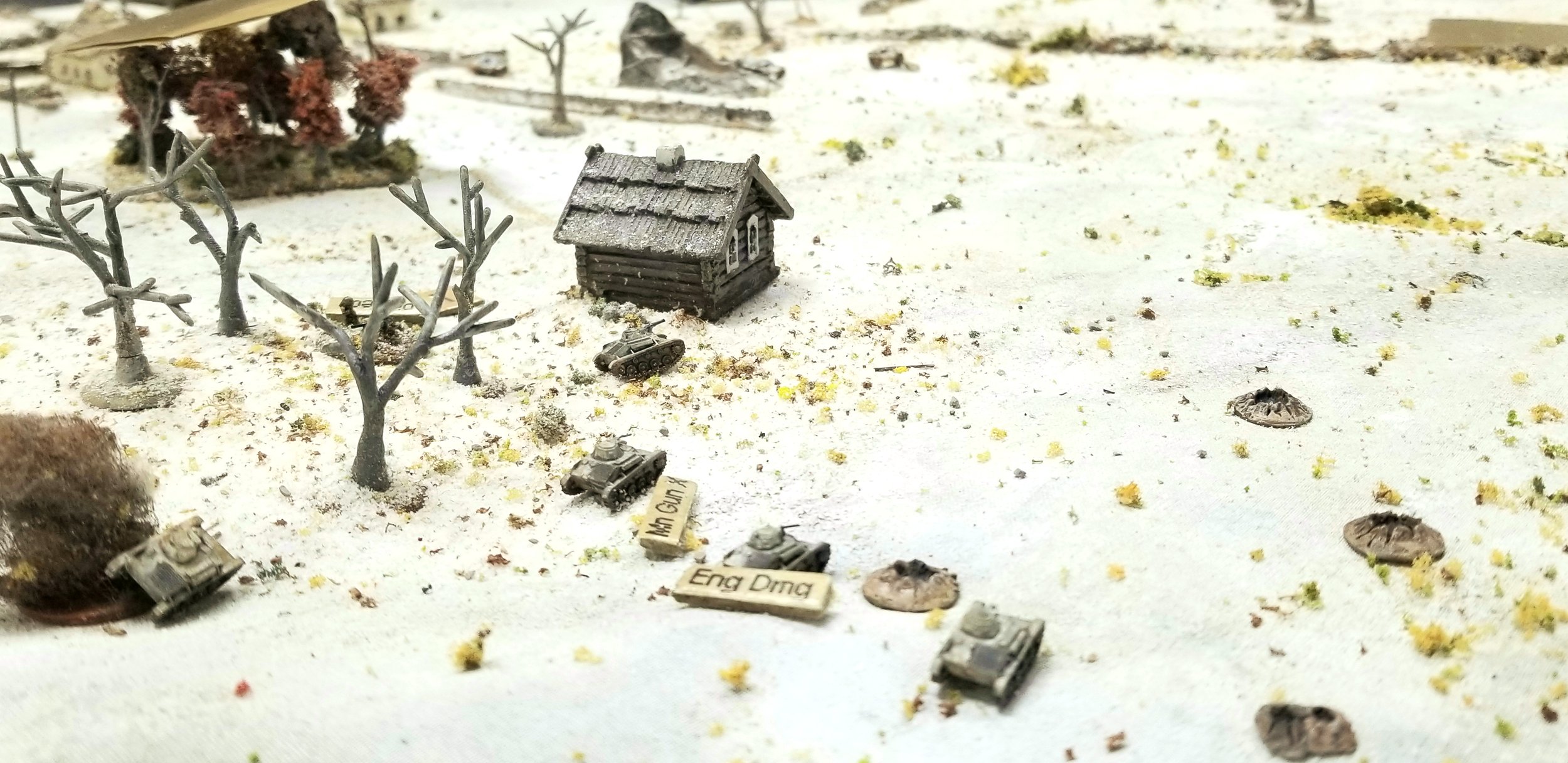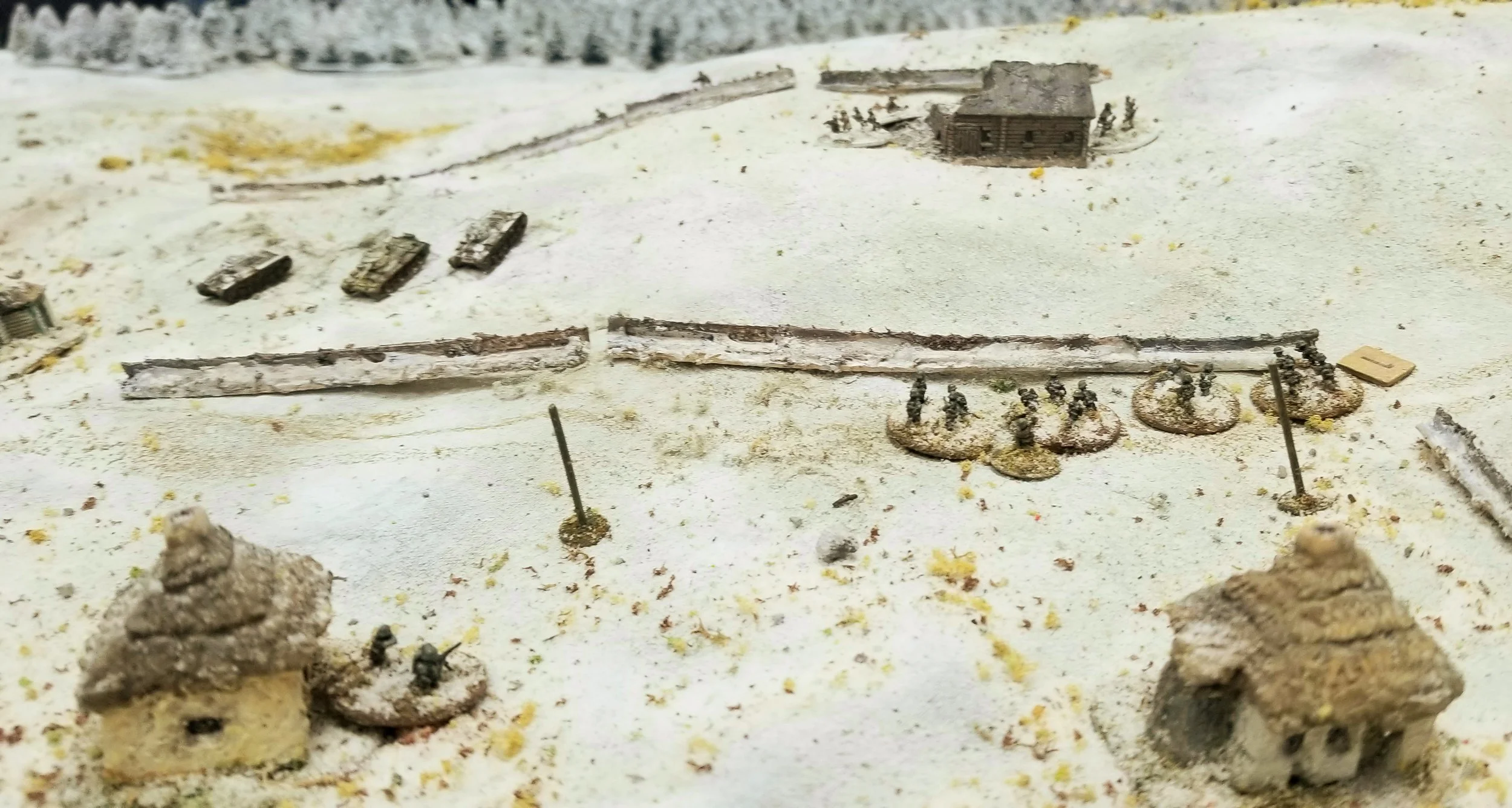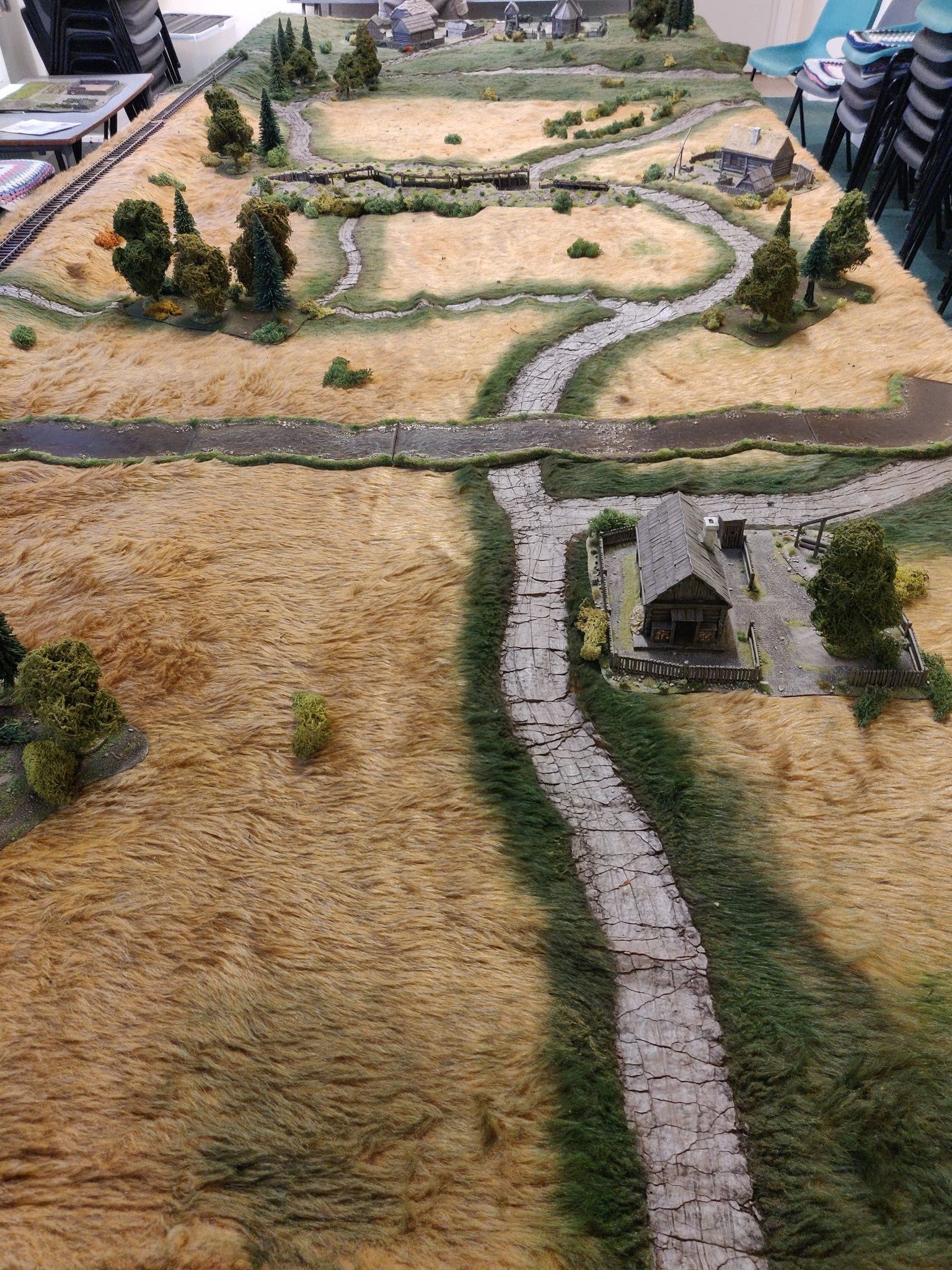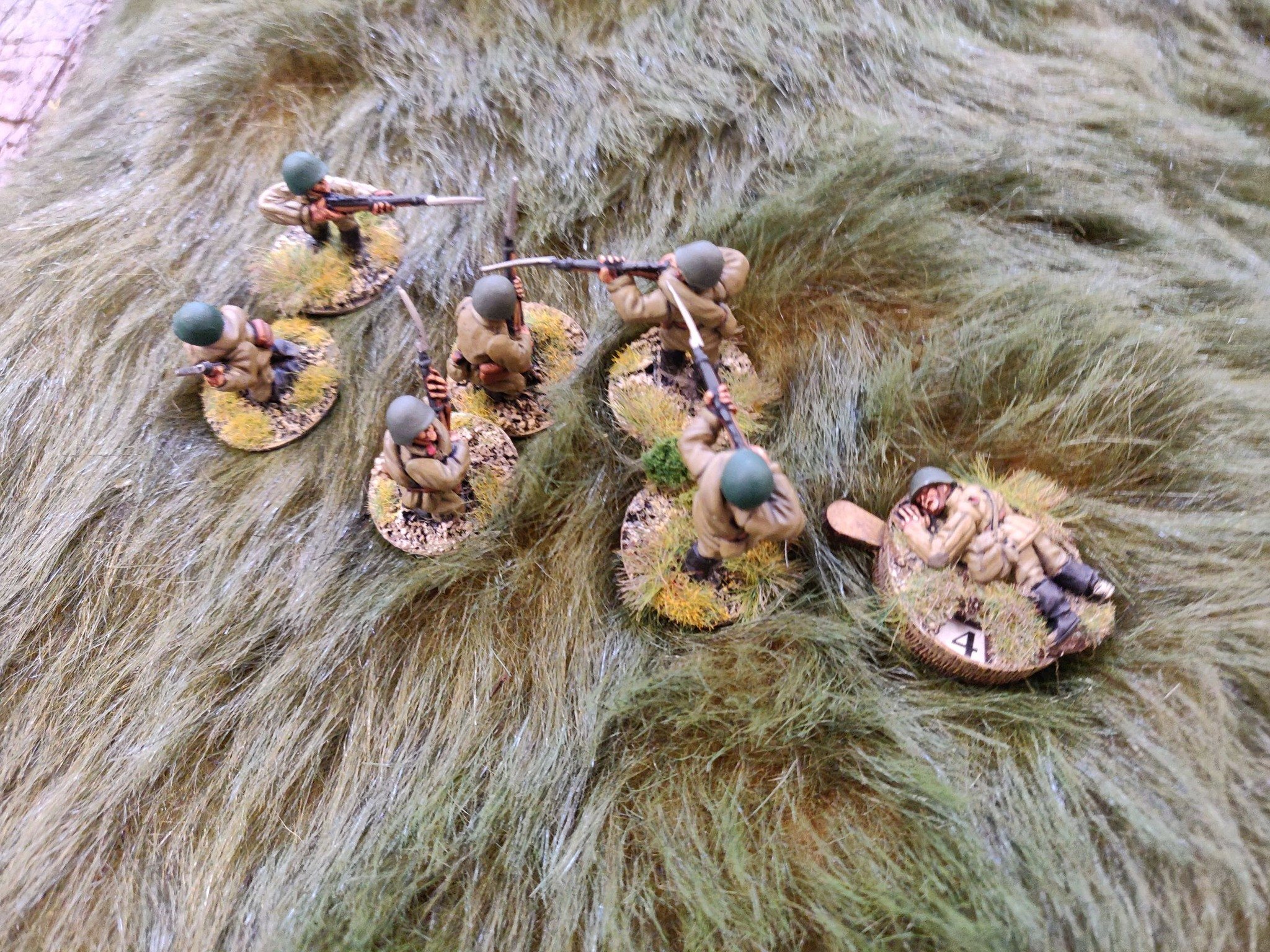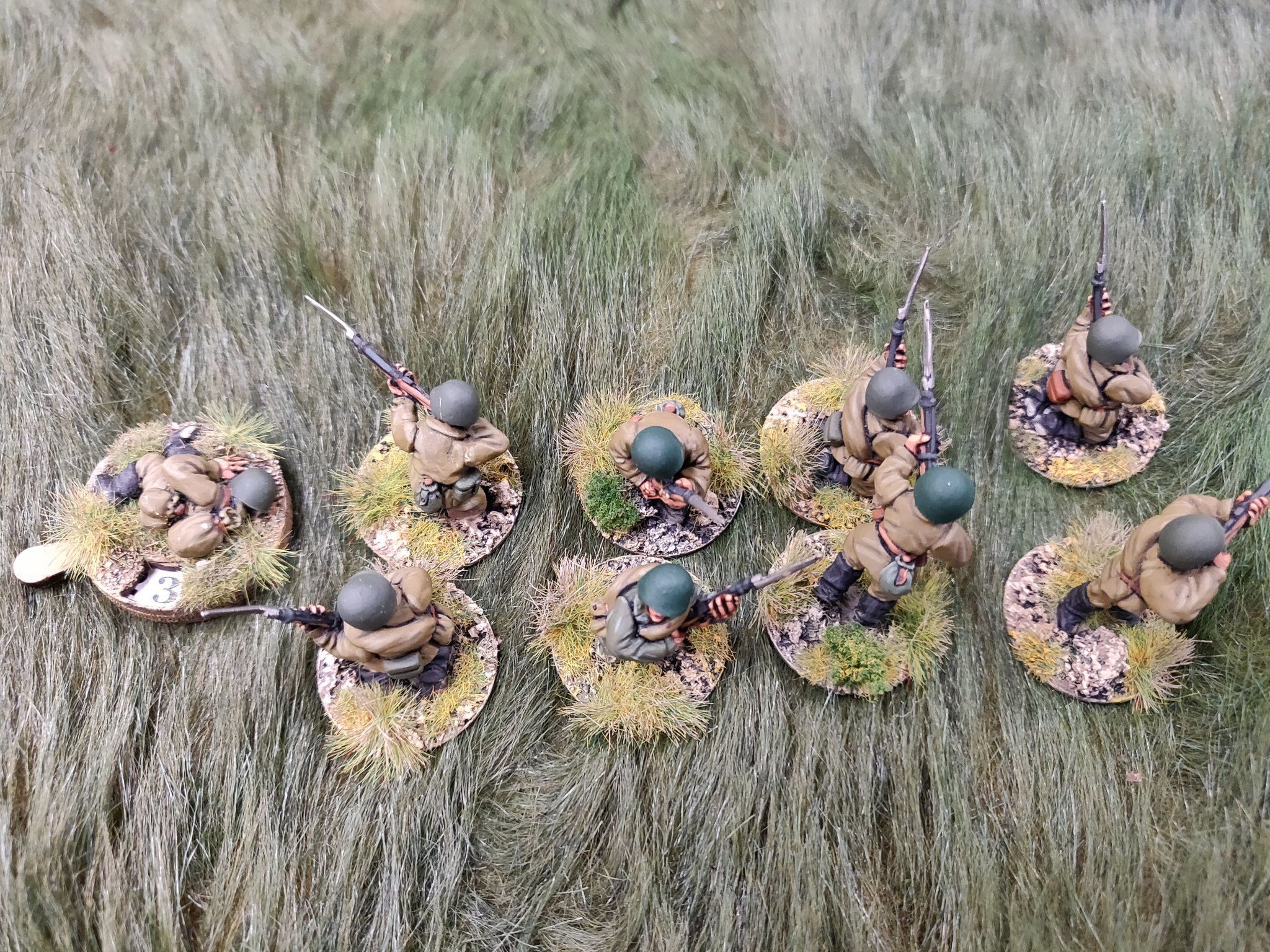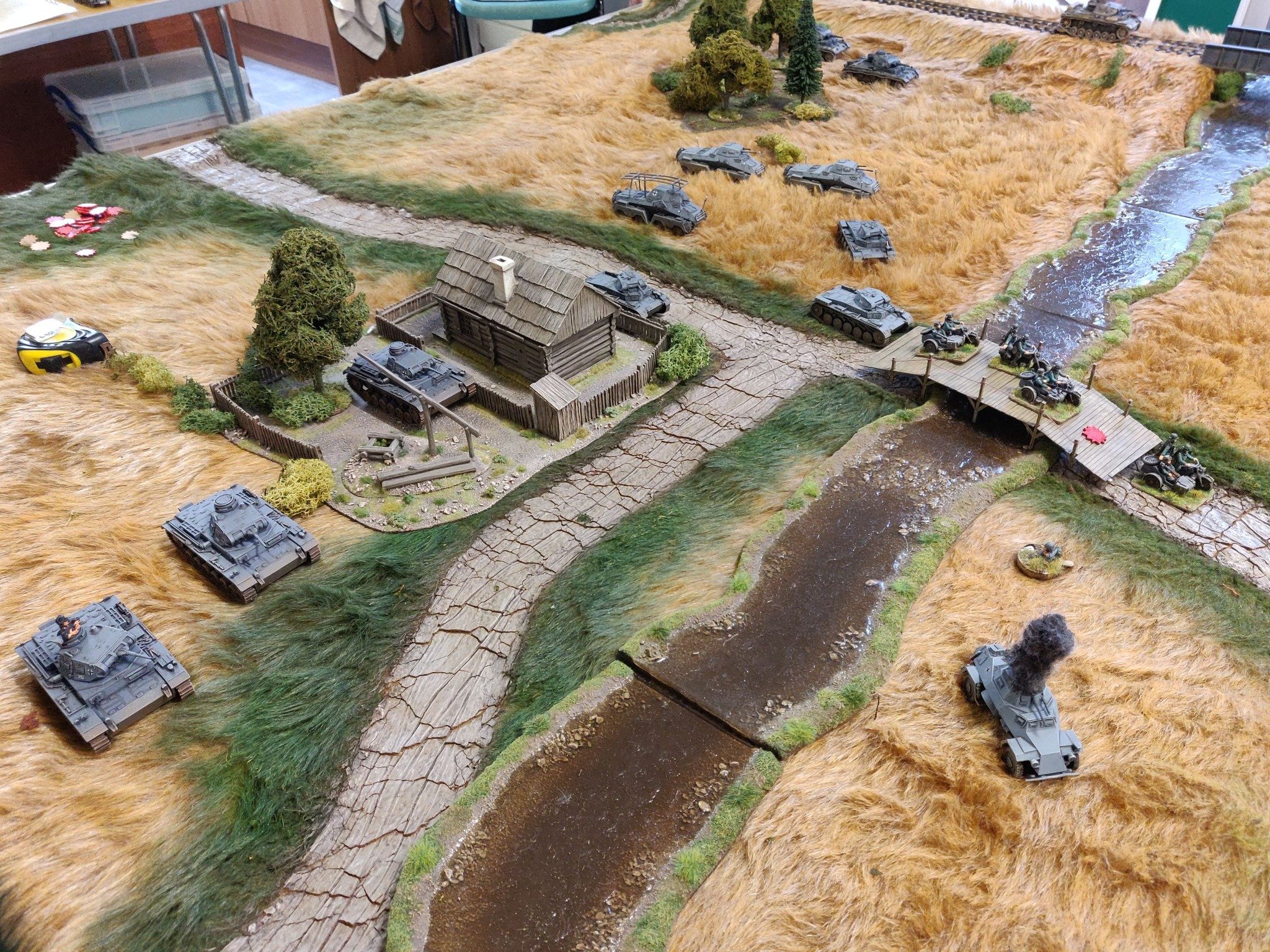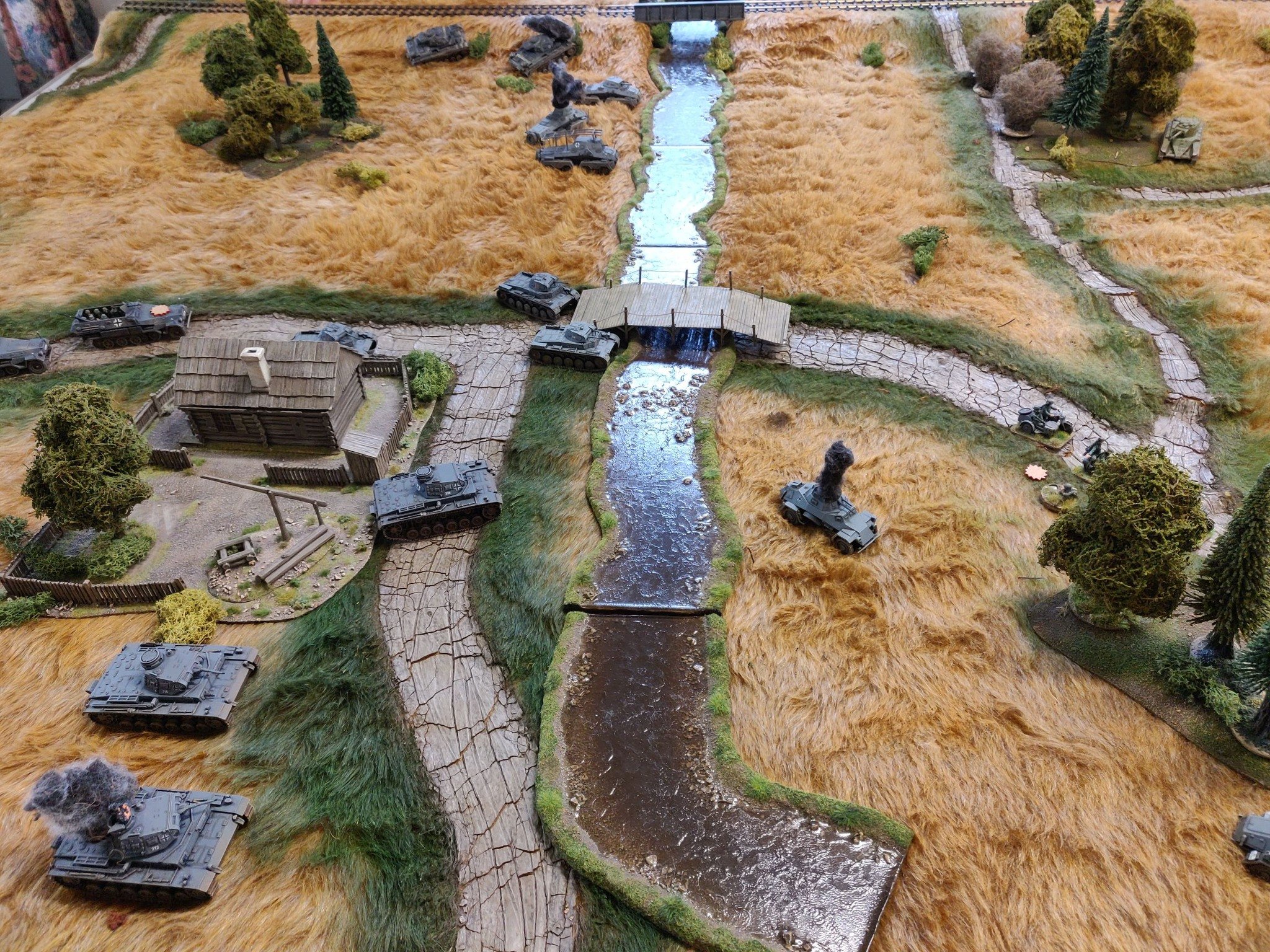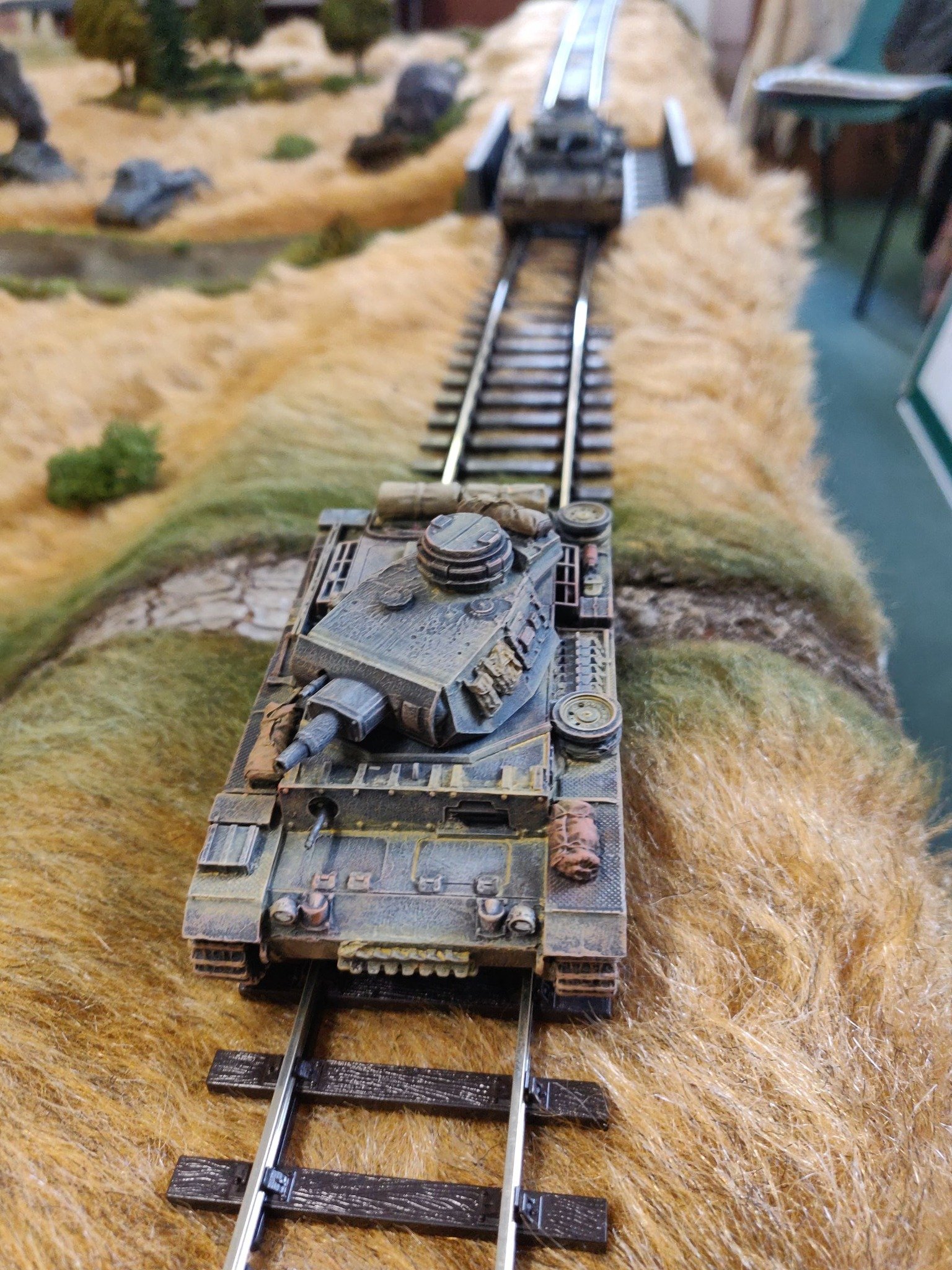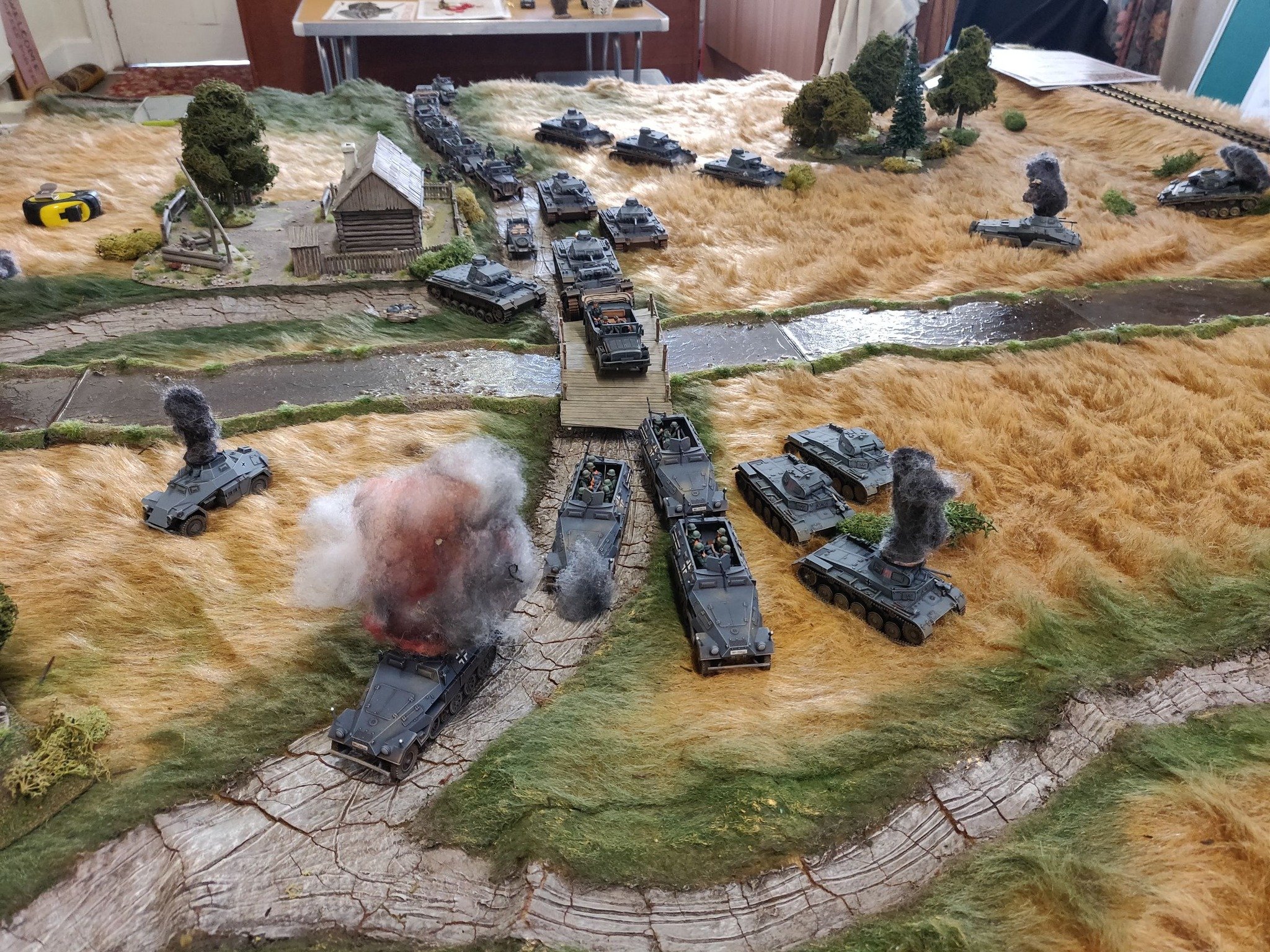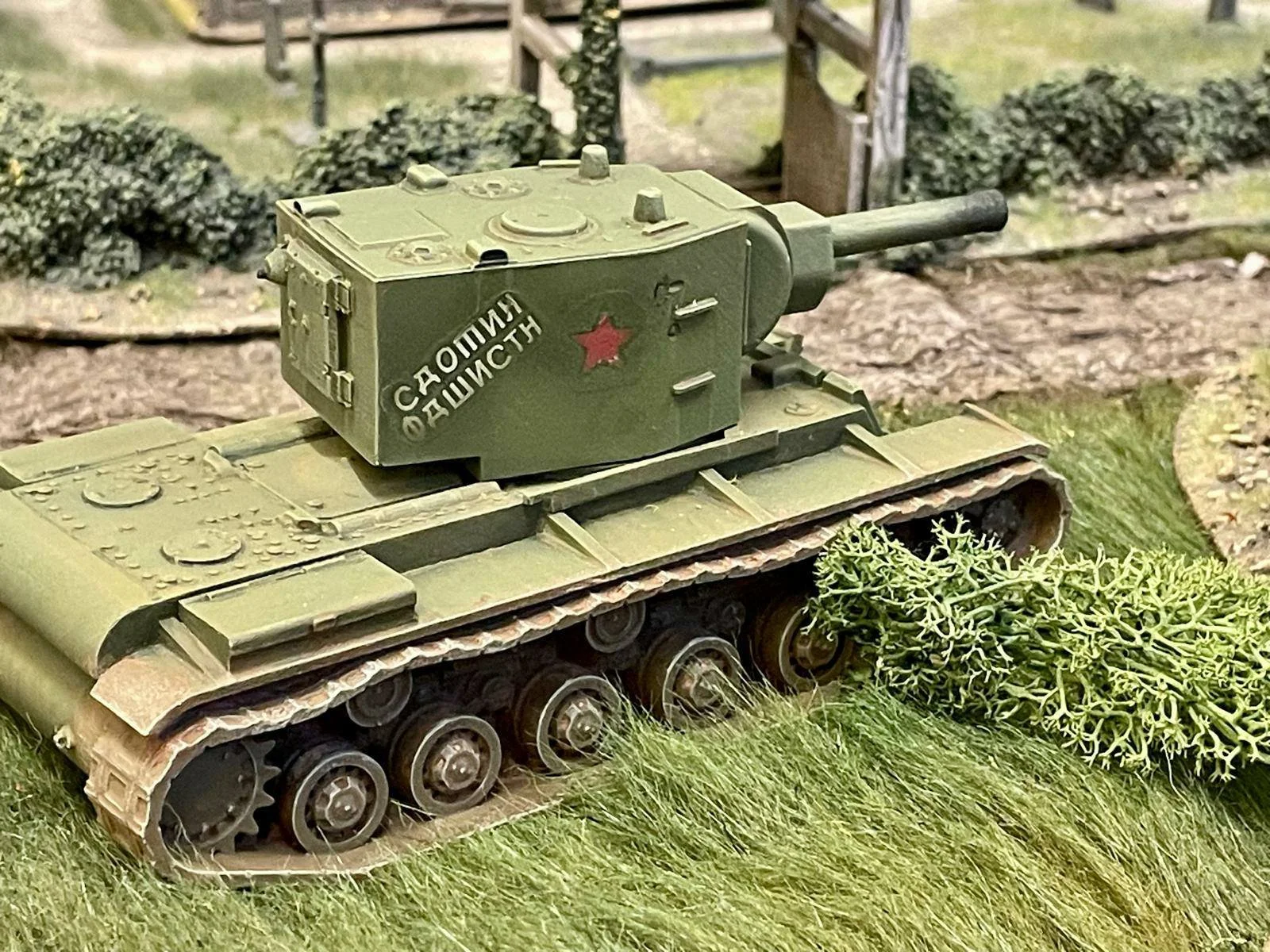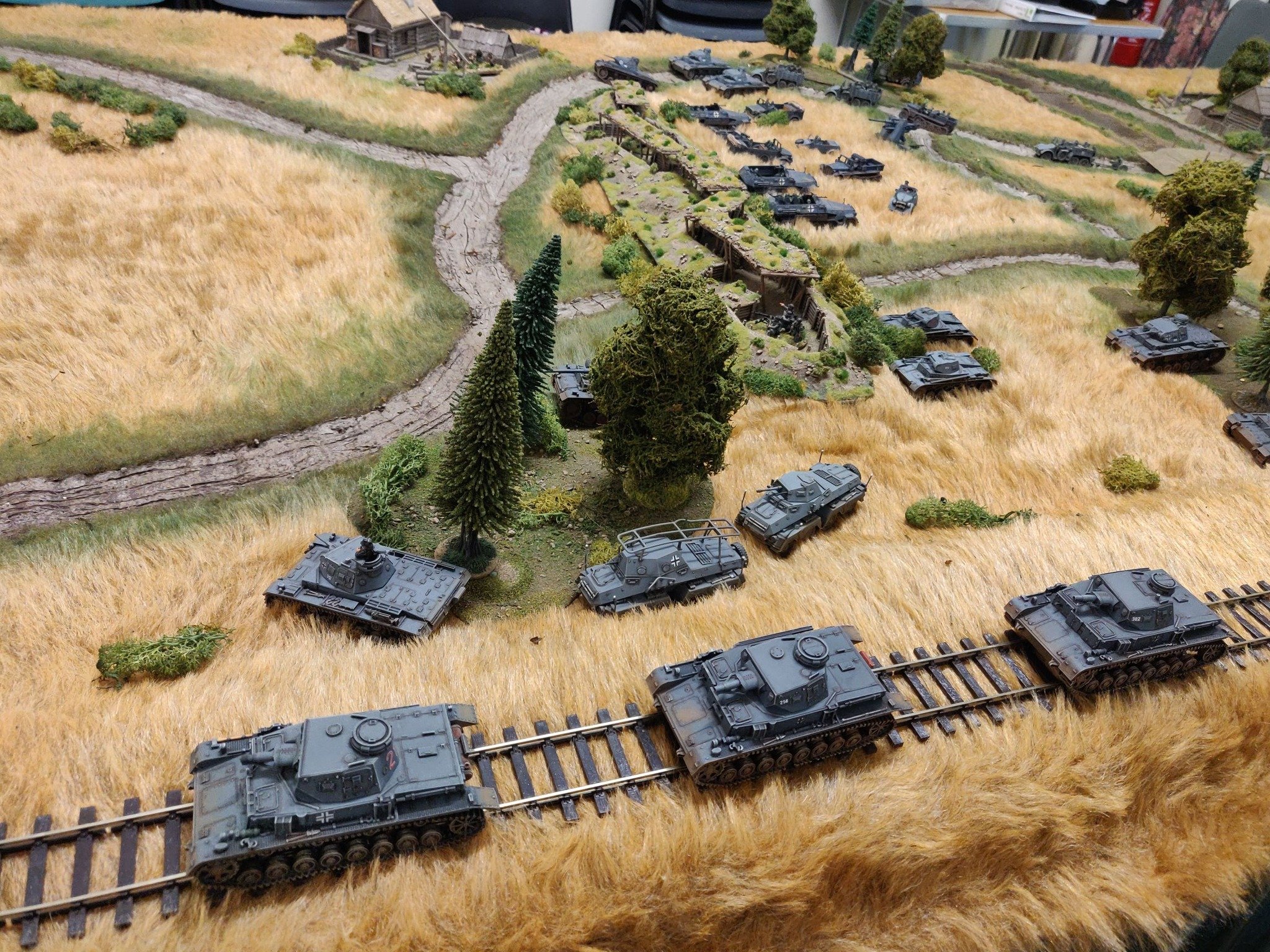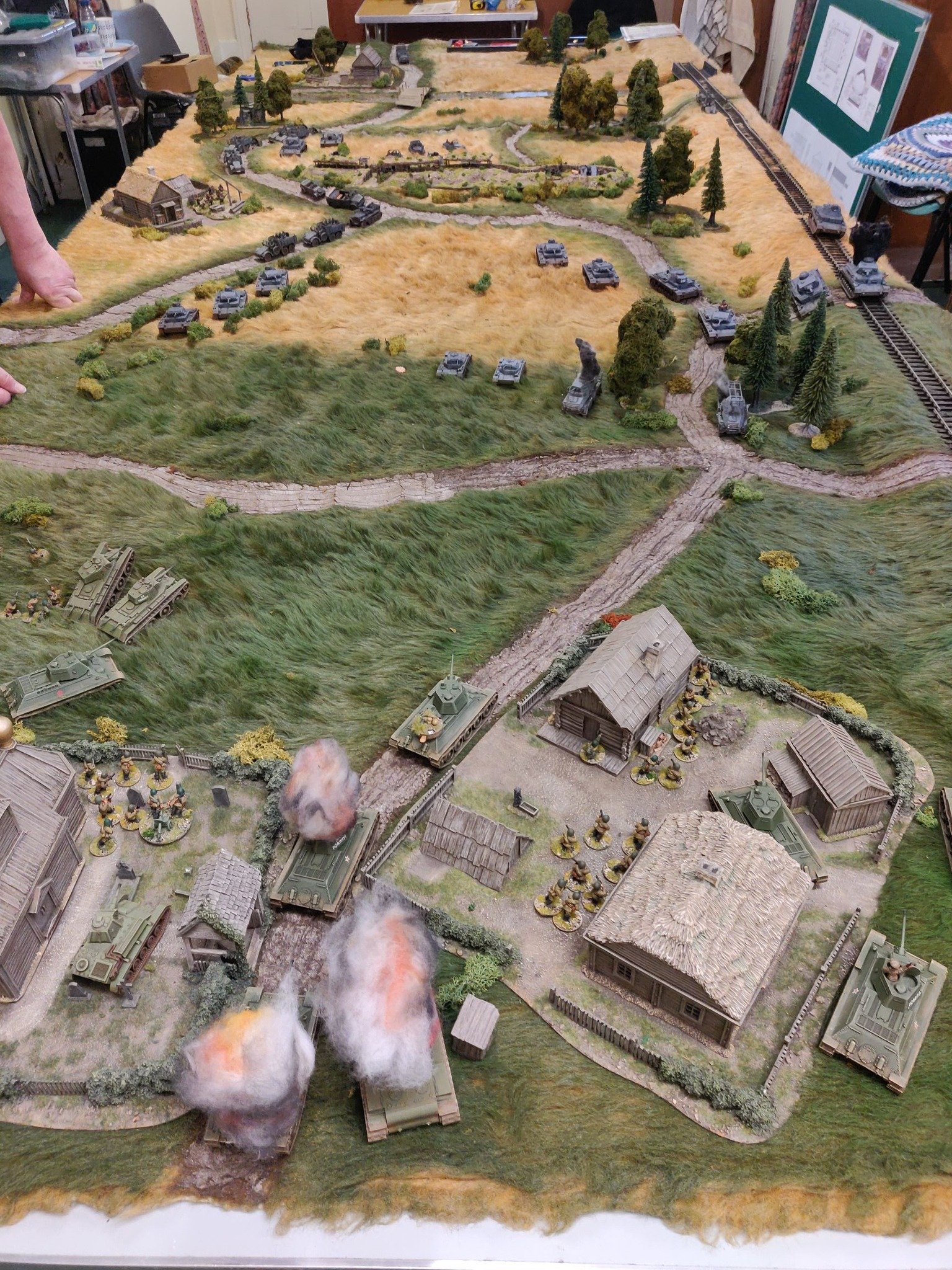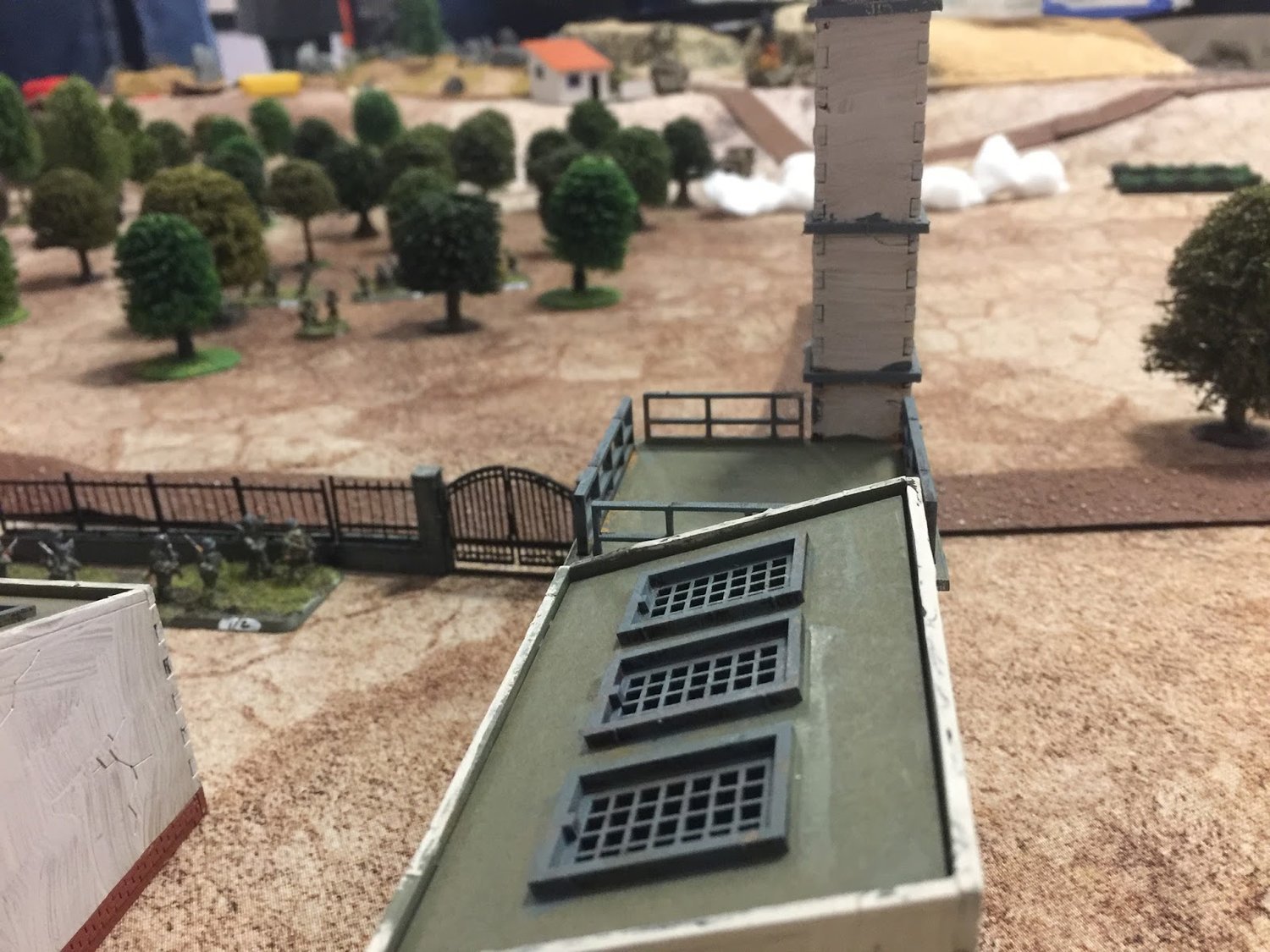The US blinds are next, and two more are brought on. One of them will be the Stuart Light tanks. That could change the game…
Captain Seattle fires next at the Sdkfz 231 hiding behind the bocage, but misses.
Leutnant Spaten and his armoured cars are next. They open fire, destroying one M8 Greyhound, immobilizing Captain Seattle’s, damaging the gunsight of the remaining M8 HMC, and damaging the engine of another Greyhound.
The Axis Rally card allows me to remove a point of shock from an infantry team.
Zug 2 activates next, firing a vast amount of lead in to the I&R troops advancing through the field. Four US troops are killed and the unit gains enough shock to send it scurrying back across the field. The Dynamic Leader card allows me to pull OberstLeutnant back to his men so he can start rallying their shock. Leutnant Eirliekor moves up to his men on his card.
Next comes Captain Minnesota of Recon Platoon 1. He’s in a dilemma. If he advances his jeeps will be shot to pieces, and his M8′s are faring little better. If he stays where he is, he could take mortar fire. He holds for now (as mortars will do less damage).
Sure enough, the mortars land immediately and cause no damage.
Next is Major Bob Boston. US losses so far are 3 M8′s destroyed, 3 Jeeps gone, one M8 HMC destroyed, 3 other AFVs damaged, almost all of 2nd Recon Platoon’s infantry dead, and most of the I&R Platoon’s infantry dead. He knows that he no longer has the strength to push forward, and to try do so will cost him the rest of the company. He orders the retreat.
Sure enough, the next card out is the Tea Break card to oblige him.
Aftermath
So what happened?
Firstly, using dummy blinds to lead your troops is a really good idea. Yes, they get spotted quickly, but they do also find the enemy quickly. And finding the enemy is vital in order for you to subsequently kill him. Effective use of dummy blinds is important in IABSM. Fail to take advantage of them and you will suffer.
The German blinds, concealed behind bocage or in the woods are very hard to spot until you get close. And then you are dead.
The US do not have it very easy in this scenario. While they do have a lot of armour, they can get ambushed easily. I think it might be safer for the armour to advance through the fields by using the gates. Still, no matter how you go about advancing, you are going to lose men. It gives you a lot of respect for fighting in bocage country.
Get in to good matchups when you fight. The German infantry have 4 actions and an extra LMG. They roll a massive 5 dice when they shoot. That is lethal and will gun down sections in short order. They lose firepower quickly. Soften them up!
The German AFVs are actually quite weak, but having four actions lets them get off two aimed shots every time they activate. Respect aimed shots as they hit often. Eventually, they will cause damage to lightly armoured Greyhounds. Have a healthy respect for the SDKfz 231.
The US player can’t get bogged down, he needs to maintain momentum. By splitting the US forces, I didn’t given them enough power to push through the German defences. That left me unable to break through on both sides.
The US here attempted to steamroller through the inferior Germans and were taught a sharp lesson. As the defender, I felt I used cover well, fired and moved well, overlapped my fields of fire well, and had good support. I should have gotten the Panzerschrecks further forward, perhaps cascading them down to the infantry Zugs. I think that gives the footsloggers some excellent AT capability. Also, having an MMG in the bocage would be good too as it will make short work of jeeps.
This was another fun game, played much faster as I am getting to grips with the IABSM rules now.
I suppose it is on to Scenario 2, following a German win...but that's a tale for another day.
The Wargaming Addict








